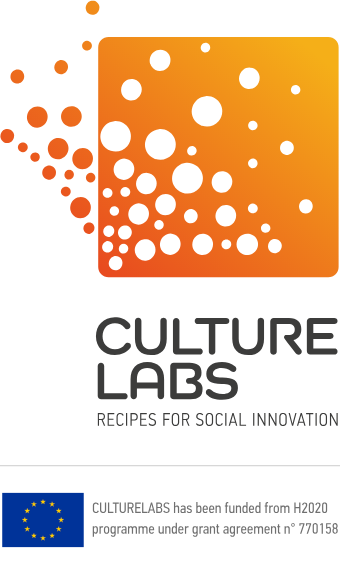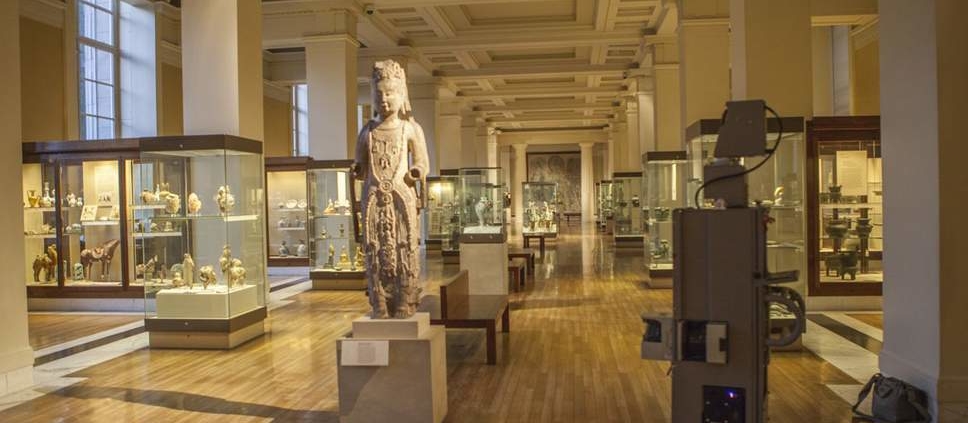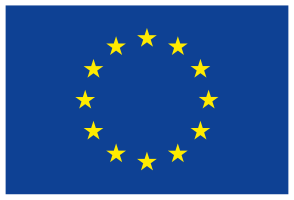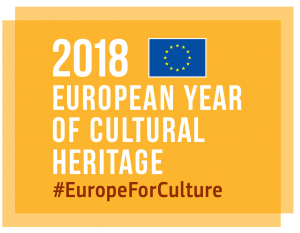The International Committee for the Collections and Activities of Museums of Cities (CAMOC) in partnership with the Commonwealth Association of Museums (CAM) and the International Committee for Regional Museums (ICR) have launched their joint project Migration:Cities | (im)migration and arrival cities.
The project is strongly related to migration and the current refugee crisis. How was the project born? What are its main aims?
The project Migration:Cities was organically born a couple of years ago in late 2014, when CAMOC decided that City Museums and Migration would be the theme to reflect on throughout 2015, the year CAMOC Committee celebrated its 10th year anniversary.
Since then, our work became more focused and timelier in light of the massive migrant crisis. Focusing on this theme was not a surprising choice, but rather a necessity, as the continued influx of migrants brought new challenges to contemporary cities. Migrant and receiving populations have been constantly making new forms of urbanism in the cities and these are reflected in cultural, geographical, political and economic processes. Migrants often settle in existing contexts, and this can lead to polarization and exclusion, but also enrichment and creation of new cultural resources.
But a question remains open: “how are cities and citizens adjusting to this increasing diversity?” What cultural, political and economic processes and transformations arise from these dynamics and what is their impact on the identities of the different groups affected? By representing these processes and transformations through their activities and functions, museums are engaging with contemporary urban life, seeking direct contact with different communities in the city, looking for ways of adapting, transforming and making cities work better and become more resilient. These urban dynamics require thoughtful engagement to allow museums to act as mediators of dialogues and places for a renewed kind of world citizenship.
The Migration:Cities | (im)migration and arrival cities is a three-year project, supported by ICOM with a special project grant. The Migration:Cities aims to explore the roles museums can have in collecting, presenting and collaborating in these processes. Its core objective is to create a web platform for museums and museum professionals to find relevant experiences, share knowledge and discuss ethical and meaningful ways to engage with new urban dynamics and the diverse realities of ‘Arrival Cities’.
The inaugural workshop of the project took place between 6 to 8 February 2017 in Athens. Was the workshop the occasion to start a conversation with different stakeholders in order to build common agendas and stronger advocacy efforts?
Certainly! In Athens where citizens are called to support with solidarity thousands of refugees, this workshop was meant to reflect collectively on how museums can create a common platform to share relevant experiences, knowledge and good practices on this very topic.
The workshop, thus, brought together approximately sixty participants (museum professionals, researchers, NGO representatives, psychologists, social workers, specialists in intercultural education, migrants and refugees) from Europe, USA, Canada, Brazil and South Africa. Our intention was to learn from experiences that are real and happening, and look into them from four different angles: museums, academic research, concerned citizens/organisations, migrants and refugees.
But this is just a beginning.
The second workshop of the project will be held in Mexico City on the 28th of October 2017, just before CAMOC’s annual conference, which will take place between 30-31 October. Regular updates will be posted on CAMOC’s website (http://network.icom.museum/camoc/) and its social media channels.
From an international perspective, what is the state of the art of the relationship between museums and migration?
Museums all over the world have become very involved with contemporary debates on migration and the life experiences of refugees. There has also been a number of publications on museum politics of identity and belonging, many European projects, focusing on the intercultural social dialogue promoted by museums, numerous inspiring exhibitions, valuable outreach work, highly resourceful web-portals and new projects, many of them realised by city museums.
The arrival of refugees and migrants is no longer seen as a one-off crisis but part of a permanent global phenomenon, driven by instability and poverty. In your opinion, are museums aware that they have a special responsibility in this field, playing a central role in the promotion of tolerance and cultural diversity?
Some museums have been aware of this responsibility long ago and others are realising it now. Today museums are called to make their position against racism and all forms of discrimination visible. More colleagues from all over the world talk about museum resistance and activism, about the need for museums not to stay neutral, otherwise they run the danger of being complicit in the production of discrimination and inequality. Museums must re-invent their social role as active spaces within the urban fabric where different people can meet to reflect about the value of hyper-diversity for promoting resilience.
The refugee crisis represents an urgent challenge that requires concrete interventions and effective responses both in the short and long term. According to CAMOC, how can museums and arrival cities combine resources to address such a complex and multifaceted issue?
During the workshop in Athens we had the opportunity to reflect a great deal on this question. A lot of interesting ideas were generated through interactive discussions in smaller group-based and plenary sessions. A detailed report will be compiled in the coming weeks, but as a foretaste I can share with you some reflections co-created by the participants.
Museums must become engines of active citizenry, connecting government, migrants and society to accept diversity and creative positive change. As a starting point, museums must critically reflect and deconstruct their narratives and recreate new multi-perspective narratives. Museums must go out on the road. Immigrant stories have no territories. They can change lives and community ties. Museums can be as diverse and magic-like as the kaleidoscopes but in order to become so, they need to keep on questioning; we need to keep on questioning.
From this point of view, there is evidence that migration has a relevant impact in terms of identity and integration. Museums represent a powerful and direct tool for social change, but they have to rethink themselves in order to contribute to the construction of a more cohesive and inclusive society…
It goes without saying. This is the idea, this is the challenge.
Can you give us some examples of inspiring experiences of museums involved in programmes or projects dealing with migrants and refugees?
There are many inspiring examples as I mentioned earlier. Some of them have been presented in Athens during the inaugural workshop of the Migration:Cities project (check programme here: network.icom.museum. Many more will be presented soon in the Cities:Migration web platform.
Greece and Italy are the principal arrival points in Europe for thousands of migrants and refugees. Do you think that arrival cities have a much greater responsibility to act as mediators of dialogues and to develop a culture of inclusion?
All cities have this responsibility. It is not clear whether Greek or Italian cities will be just transit cities. It is also uncertain whether destination cities in Europe (and beyond) will be welcoming arrival cities. The effort we collectively need to invest on is to create inclusive cities whereby diversity is appreciated and embraced.
Taking into consideration the precarious state of democracy in Europe and the election of Trump as US President, are you worried that the public debate and narrative on migration might result in the rise of nationalism, hostility and violence?
This is a potential gloomy scenario, but we, civil society and museum professionals, must join forces to eliminate this risk.
Speaking more generally, why should migration and the refugee crisis be a priority for the cultural sector in general and museums in particular?
The Recommendation on the Protection and Promotion of Museums and Collections, their Diversity and their Role in Society, which was presented at UNESCO’S 38th General Conference in November 2015, is based on the premise that museums work in favour of the education of humanity for justice, liberty and peace, helping to build moral and intellectual solidarity among people taking into account the magnitude of socio-economic and political changes that have affected the role and diversity of museums. Museums have a huge potential to present incredibly diverse stories of migration through their collections, oral history programmes, outreach work and so many other initiatives through which people can connect, exchange experiences, feel empathy, remember the past, dream the future, get empowered.
Before meeting in Athens, we asked all workshop participants to reflect on the theme of migration and its connection with the cultural sector. From the answers they shared, it has been more than obvious that there was a great urge to learn from others’ experiences locally and globally in order to first get informed from a humanitarian point of view and then find out how museums can play an active role in the defuse of sensitive issues, and on how they can build bridges with migrant communities and between the cultural sector and the NGOs by designing and implementing common projects. As a colleague from USA noted “museums are underutilized spaces in which to convene difficult city-wide dialogue about migration and immigration”, and we surely need to reflect how we can elevate their social role. The observation shared by a participant in another CAMOC’s workshop, held in Glasgow in 2015, reflected this necessity in the simplest but firm way: “museums must create spaces for people to be and share the best of who they are. They must be places for compassion and humanity”.
I do believe museums can be these spaces of human encounters but they must try to avoid simplifying complex stories and re-enforcing stereotypes about migrant and refugees’ experiences. The challenge is to curate stories that bring together diverse migrant and non-migrant stories and trace the social changes that are happening now in society, the current context. The challenge is also to discuss diversity in connection with key issues like the world peace and security. Museums must dare to invite audiences to disagree and value different contributions.






Leave a Reply
Want to join the discussion?Feel free to contribute!